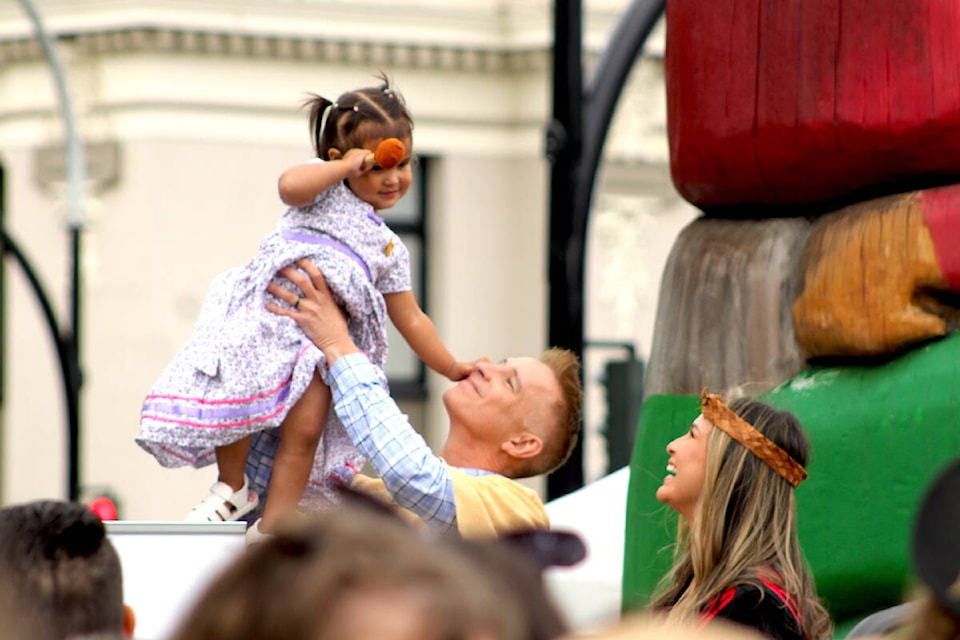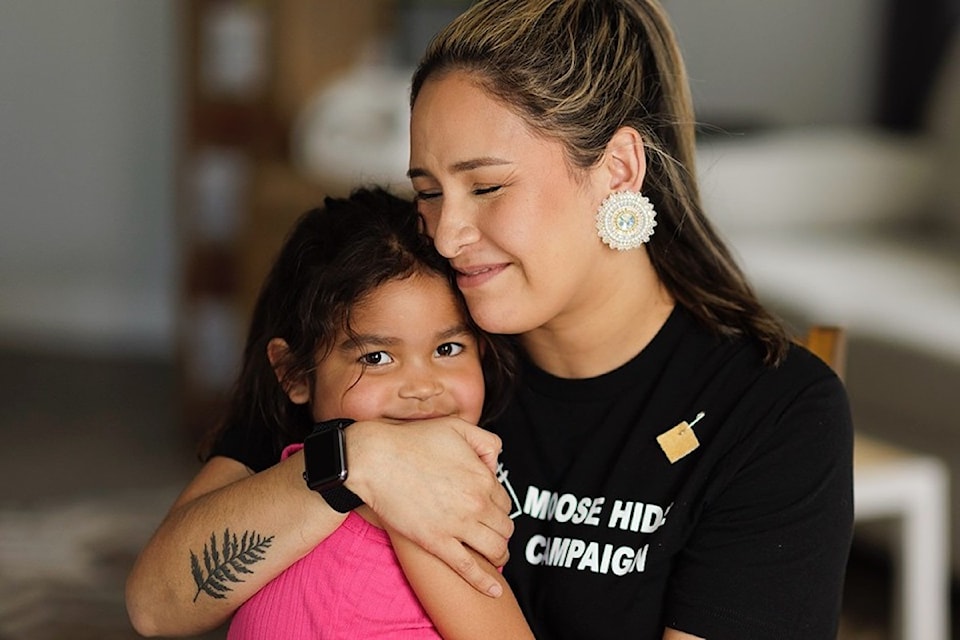After wandering into the room and nestling into her mom's lap, Raven Lacerte's young daughter Cedar shows off a small bowl she sculpted and painted at school that day.
“You can see just how precious my little baby is,” Lacerte says. “You want to do every single thing that you can to make sure you're providing them with the best life."
She parallels that with her own father's efforts as he always looked for ways to ensure his daughters would be free from harm.
Their family comes from communities along the Highway of Tears, a stretch between Prince George and Prince Rupert where many women, especially Indigenous ones, have been murdered or have gone missing.
Lacerte remembers seeing Facebook posts and other call-outs about missing people from her community. She'd often later hear those people's lives were taken.
“As a young girl, hearing about the murdered and missing Indigenous women hurts in the deepest part of my spirit; it just doesn’t make sense to me,” she said. “The pain and the trauma this has on our community and on our families – to know the most precious people in our communities are losing their lives – we really believe that’s something that doesn’t need to happen."
With the goal of ending violence against women and children, Lacerte and her father founded the Moose Hide Campaign after the idea came to them during a hunting trip along the notorious highway in northern B.C.
Over the last 13 years, the campaign has sparked a national call to action to stand up against violence. The campaign has given out more than six million hand-cut moose hide pins to date, each one expected to spur five conversations about addressing violence.
During the hunting trip, the pair discussed how her dad had just been to a conference focused on domestic violence. He was troubled by the fact that, of the hundreds in attendance, he was one of the very few men there. Then as a moose appeared and gave itself to them, Lacerte said it was like receiving a message from their ancestors about what they needed to do.
They took the moose hide back to their home in Victoria and hung it up to dry in the backyard. Lacerte and her sister then cut up the hide with kitchen scissors, forming squares with edges far more "wonky looking" than those the campaign hands out today.
Her family began wearing the moose hide pins around, leading to people asking what they were for. It was a nerve-racking task for Lacerte, then just 16, to tell people they were standing up to violence. But knowing the issue often thrives in the shadows, she knew there was value in shining a light on it through those uncomfortable conversations.
People wouldn’t engage much during those initial interactions, but after a while she started to get positive responses and people would ask for a pin of their own. Soon after, they decided to hold the first Moose Hide Campaign day to raise awareness for the cause.
Lacerte can vividly picture that humble first year, her memories stained with the image of around a dozen men standing on the B.C. legislature's steps – all of them fasting to show their commitment to rooting out gender-based violence. She knew then it was a message that could resonate with Canadians, but still didn't know if much would come from their efforts.
A few years later, the campaign's co-founder stood in a similar spot outside the government building. She recalls the surreal moment of looking behind her and seeing every inch of Belleville Street swallowed up by a sea of people marching toward the legislature.
It’s been incredible to see the campaign grow, she said, as more than half a million Canadians participated this year.
“This little medicine is part of them now, so every single person that’s part of the campaign is part of the change that we so desperately need,” Lacerte said. “We want this medicine to spread into every little nook and cranny across this country.”

Women have often had to lead the way in advocating against violence, Lacerte noted, so the campaign especially calls on men and boys to take a stand and look at what changes they can make in their own lives.
“We really believe we need everyone to come together and be part of this solution,” Lacerte says.
When they started the campaign, the only stories shared were ones of pain or trauma. But now they’re seeing a shift where people are telling them the initiative helped heal relationships or break cycles of violence.
Survivors have told Lacerte that seeing people wear the hide makes them feel seen and respected. Countless others who have been victimized by violence have said the campaign's honest conversation spaces gave them the courage to share their stories for the first time.
“I’m hearing from people that they use this (pin) as a tool every single day.”
Men constantly tell Lacerte the campaign has inspired them to take a look at their actions. Highlighting how their goal isn't to call people out but to call them into a space of healing, the anti-violence campaigner said she refers to their mission as a “love revolution".
On top of distributing the free pins and the annual campaign day, the initiative engages with organizations and crowds big and small. It also provides various educational resources tailored to all ages, like the one for schoolkids that teaches them to respect others and spread kindness throughout the rest of their lives.
The B.C. government says there is an estimated 1,000 physical and sexual assaults against women every week in the province, and adds 80 per cent of victims never report their cases. Lacerte said it's the reason their campaign isn't taking its foot off the gas.
“It’s really important that everyone feels that sense of urgency, feels that we can all be part of that change, that we all need to play a part in moving towards a brighter future for women and children.”

While on their hunting trip along the Highway of Tears more than a decade ago, Lacerte couldn't help but note the significance of a father and daughter engaging in cultural practices within their traditional territory. Her mother was taken to a residential school at the age of six, so Lacerte represents the first generation of her family that has not been taken to the institutions that sought to erase Indigenous culture.
Pinning the piece of hide to her chest inspires a moment of reflection every morning – one where she asks who she wants to be in this world.
Lacerte knows many people impacted by violence are often silent – or silenced – as they fear speaking out about what's happening to them. She often thinks about the words of her Indigenous role models who call on those with a voice to use it for those who don't.
“I was just a kid with a vision, with a hope for a brighter future and I had no idea what was going to come of this,” the Lake Babine First Nation member said. “To be an Indigenous woman in a leadership role is so empowering and I feel very lucky and very grateful to be in this position, to spread love and respect and invite people into that space.”
It was always clear her father helped start the campaign because of his family, but that calling didn't fully resonate until she had children of her own.
“I’ll go knock on every door across this country if it meant that would give her an opportunity,” Lacerte said after Cedar climbed down from her lap.
“My sweet girls, I’ll just do anything for them, I love them so much.”



